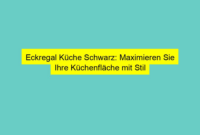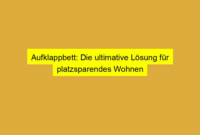Welcome, SanctuaryVF! In this article, we will dive into the world of World Bank Open Data API and explore how it opens up a world of information and insights for developers, researchers, and enthusiasts alike. Whether you are a data-driven professional or a curious individual, the World Bank Open Data API empowers you to explore, analyze, and leverage global development data like never before. Let’s embark on this journey together and discover the limitless possibilities that await.
As the world becomes increasingly interconnected, access to reliable and comprehensive data has become crucial for shaping policies, driving innovation, and making informed decisions. The World Bank Open Data API, with its vast collection of datasets and resources, provides a gateway to this wealth of information. Let’s explore some key aspects of the World Bank Open Data API that make it an invaluable tool for anyone seeking to understand and contribute to global development.
Browsing the Global Development Landscape
Accessing Data by Country or Indicator
With the World Bank Open Data API, you can easily navigate through the global development landscape. Whether you are interested in a specific country’s development indicators or want to compare indicators across countries, the API offers a seamless browsing experience. By specifying a country or indicator, you can retrieve relevant datasets and gain insights into various aspects of development. From economic growth to poverty rates, education to healthcare, the World Bank Open Data API allows for exploration and analysis from multiple angles.
For example, with just a few lines of code, you can retrieve the latest data on poverty rates in Germany, analyze trends over the years, and compare it to other countries. The flexibility of the API empowers developers to create interactive visualizations, insightful dashboards, and robust analytical models that drive actionable insights.
Unlocking Recently Updated Datasets
Discovering Central Asia Flood Hazards and Food Price Inflation
The World Bank Open Data API continuously updates its datasets, ensuring that you have access to the most up-to-date information. Let’s explore some of the recently updated datasets that shed light on critical global development issues.
Central Asia flood hazard – fluvial flood hazard maps UNDEFENDED 2080 projection
This dataset provides detailed flood hazard maps for Central Asia, specifically focusing on fluvial flood hazards and projections for the year 2080. By accessing this data, researchers and policymakers can better understand the potential risks associated with flooding and develop strategies to mitigate them.
Central Asia flood risk hazard intensity summaries
These summaries offer a comprehensive overview of flood risk hazard intensities in Central Asia. By examining these intensities, experts can identify areas at higher risk and design targeted interventions to safeguard communities and infrastructure.
Monthly food price inflation estimates by country
Food price inflation directly impacts the affordability and accessibility of essential commodities. This dataset provides monthly estimates of food price inflation by country, allowing researchers and policymakers to track trends, identify patterns, and implement necessary measures to ensure food security.
Monthly food price estimates by product and market
Unveiling the intricate dynamics of the global food market, this dataset offers monthly estimates of food prices by product and market. It provides valuable insights into price fluctuations, supply and demand dynamics, and the economic forces shaping the food industry worldwide.
Unleashing the Power of Additional Resources
Open Data Catalog, DataBank, and More
Beyond the comprehensive datasets available through the World Bank Open Data API, there are additional resources that further enrich your exploration of global development. Let’s take a look at some of these invaluable resources:
Open Data Catalog
The Open Data Catalog serves as a treasure trove of datasets, reports, and publications from various global organizations. It brings together a multitude of data sources, empowering you to dive deeper into specific topics and access diverse perspectives on global development issues.
DataBank
DataBank is a powerful tool that enables users to visualize and analyze data from the World Bank’s numerous databases. It offers a user-friendly interface with customizable graphs, maps, and tables, making complex data accessible and understandable.
Microdata Library
The Microdata Library provides access to raw survey data collected by the World Bank and other organizations. Researchers can utilize this resource to conduct in-depth analysis, uncover unique insights, and contribute to evidence-based policy-making.
Atlas of Sustainable Development Goals
The Atlas of Sustainable Development Goals (SDGs) provides a comprehensive view of the world’s progress towards achieving the SDGs. Through interactive maps, charts, and narratives, this resource fosters a deeper understanding of the challenges and opportunities surrounding sustainable development.
International Debt Statistics
International Debt Statistics provides a comprehensive overview of countries’ external debt. This resource offers valuable insights into debt indicators, borrowing trends, and debt sustainability analysis, allowing for informed decision-making in the realm of economic policy.
International Comparison Program
The International Comparison Program harmonizes price and expenditure data from different countries, enabling meaningful comparisons of economic indicators across nations. This resource plays a vital role in understanding global economic trends, regional disparities, and income inequalities.
World Development Indicators
The World Development Indicators database offers a wide range of socio-economic indicators, covering topics such as poverty, education, health, and infrastructure. Researchers and analysts can leverage this resource to gain a comprehensive view of global development progress and challenges.
Open Finances
Open Finances provides information on the World Bank’s financial transactions, allowing for transparency and accountability in resource allocation. By accessing this resource, stakeholders can track funding flows, explore project details, and monitor the impact of financial investments.
Projects & Operations
Projects & Operations provides a comprehensive database of World Bank projects and operations, offering insights into development initiatives worldwide. This resource allows users to explore project details, track progress, and evaluate the impact of interventions on a global scale.
Open Data Toolkit
The Open Data Toolkit offers a comprehensive guide to understanding, using, and promoting open data. It provides resources, best practices, and case studies to support individuals and organizations interested in harnessing the power of open data for positive change.
Living Standards Measurement Study
The Living Standards Measurement Study collects and disseminates household survey data from various countries. Researchers can utilize this resource to examine living conditions, poverty rates, and social dynamics, contributing to evidence-based policies that improve the well-being of individuals and communities.
Global Consumption Database
The Global Consumption Database offers insights into consumer spending patterns, enabling researchers and policymakers to understand consumption trends across countries. This resource is a valuable asset for economic analysis, market research, and the development of targeted interventions.
Demystifying the Indicators API: Your Passport to Data-Driven Solutions
The Indicators API is a pivotal component of the World Bank Open Data API, enabling developers to seamlessly access and integrate development indicators into their applications. By understanding the functionalities and possibilities of the Indicators API, you can leverage its power to unlock data-driven solutions and insights. Let’s delve into some key aspects:
API Access and Authentication
To access the Indicators API, you need to authenticate your requests using an API key. Visit the World Bank Data website and create an account to obtain your API key. This key acts as your passport to accessing the wealth of development data available through the API.
Once you have your API key, you can start exploring the various endpoints and query parameters available. The Indicators API documentation provides detailed information on how to structure your requests, specify the desired indicators and countries, and retrieve the data in your preferred format.
Accessing the Knowledge Base and Seeking Support
Inevitably, questions and challenges may arise as you navigate the Indicators API and delve into your development projects. The World Bank Data website offers a comprehensive Knowledge Base, housing articles that address common queries, provide coding samples, and offer best practices for API integration.
If you require further assistance, the World Bank Data support team is readily available. You can reach out to their support channels, including email and phone support, to get timely and effective guidance for your API-related endeavors.
Conclusion: Your Journey Continues
Congratulations, SanctuaryVF! You have embarked on an exciting journey into the world of World Bank Open Data API. As you explore the vast array of datasets, resources, and possibilities, remember that this article is just the beginning. The World Bank Data website offers a plethora of articles, tutorials, and real-world examples that will enrich your understanding and empower you to create data-driven solutions that drive positive change.
So, onward you go! Dive deeper, ask questions, experiment, and unlock the transformative power of the World Bank Open Data API. Join a vibrant community of developers, researchers, and change-makers who are harnessing the potential of open data to build a better future. Your journey awaits at World Bank Data!
FAQ: Answers to Your Burning Questions
1. What is the World Bank Open Data API?
The World Bank Open Data API is a powerful tool that provides access to global development data. It offers a vast collection of datasets and resources that can be used for research, analysis, and the development of data-driven solutions.
2. How can I access the World Bank Open Data API?
To access the World Bank Open Data API, you need to create an account on the World Bank Data website and obtain an API key. This key will authenticate your requests and grant you access to the API’s functionalities and datasets.
3. What can I do with the World Bank Open Data API?
With the World Bank Open Data API, you can browse through global development data, analyze indicators by country or topic, access recently updated datasets, and integrate the data into your applications or research projects. The API empowers you to gain insights, drive innovation, and make informed decisions.
4. How do I authenticate my requests to the Indicators API?
To authenticate your requests to the Indicators API, you need to include your API key in the request headers. This API key acts as your identification and gives you access to the desired data. Make sure to follow the authentication guidelines provided in the Indicators API documentation.
5. Can I access historical data using the World Bank Open Data API?
Yes, the World Bank Open Data API offers access to historical data, allowing you to analyze trends over time. By specifying the desired time period in your requests, you can retrieve data from the available historical records and gain valuable insights into the patterns and dynamics of global development.
6. Are there any code samples or tutorials available for API integration?
Yes, the World Bank Data website features a Knowledge Base that provides code samples, tutorials, and best practices to assist you in API integration. The Knowledge Base offers a wealth of resources to help you make the most of the World Bank Open Data API and build robust, data-driven solutions.
7. Can I provide feedback on the World Bank Open Data API?
Absolutely! The World Bank values your feedback and encourages you to share your thoughts, suggestions, and experiences with the Open Data team. You can provide feedback through the World Bank Data website, ensuring that your voice is heard and contributes to the continuous improvement of the API.
8. How can I contact the World Bank Data support team?
If you require assistance or have specific inquiries, you can reach out to the World Bank Data support team through their dedicated support channels. You can find their contact information, including email and phone support, on the World Bank Data website.
9. Can I combine World Bank Open Data with other data sources?
Absolutely! The World Bank Open Data API provides a powerful foundation that can be complemented with data from other sources. By integrating data from various sources, you can gain a holistic view of global development and uncover unique insights that drive innovation and positive change.
10. Where can I find more articles and resources related to World Bank Open Data?
The World Bank Data website offers a comprehensive collection of articles, tutorials, and resources related to World Bank Open Data. Visit their website’s Knowledge Base, explore the Data Catalog, and dive into the Indicators API documentation to unlock a wealth of information and empower your data-driven endeavors.
Continue Your Data Exploration and Unlock a World of Insights
Congratulations on delving into the world of World Bank Open Data API! Your journey has just begun, and endless possibilities await. As you continue to explore the limitless potential of global development data, remember to connect with the vibrant community of developers, researchers, and change-makers who share your passion for data-driven solutions.
Join the conversation, share your experiences, and collaborate with like-minded individuals to drive positive change through data. The World Bank Data website is your gateway to a world of insights and opportunities, so let your curiosity guide you, and let your creativity thrive.




